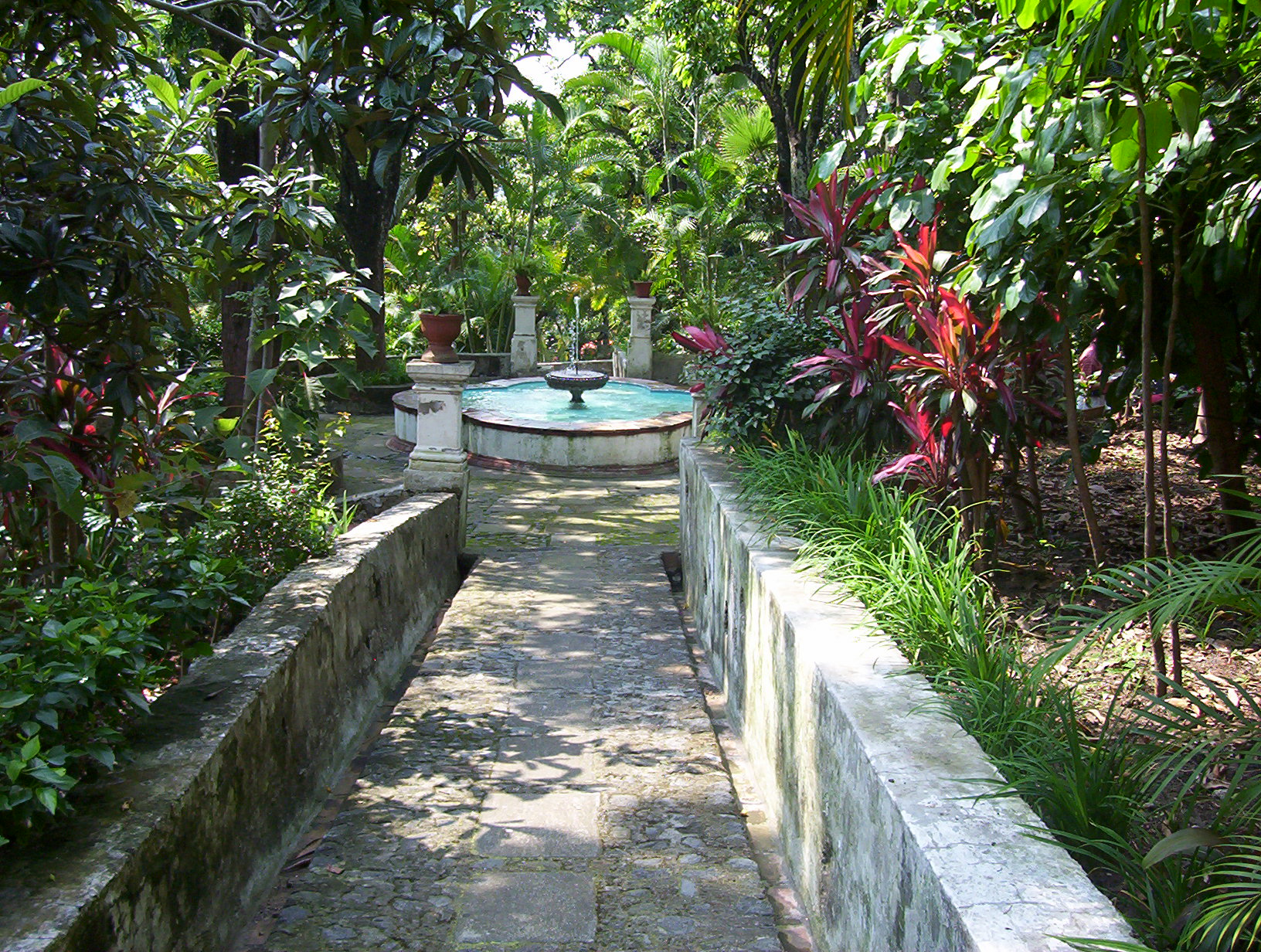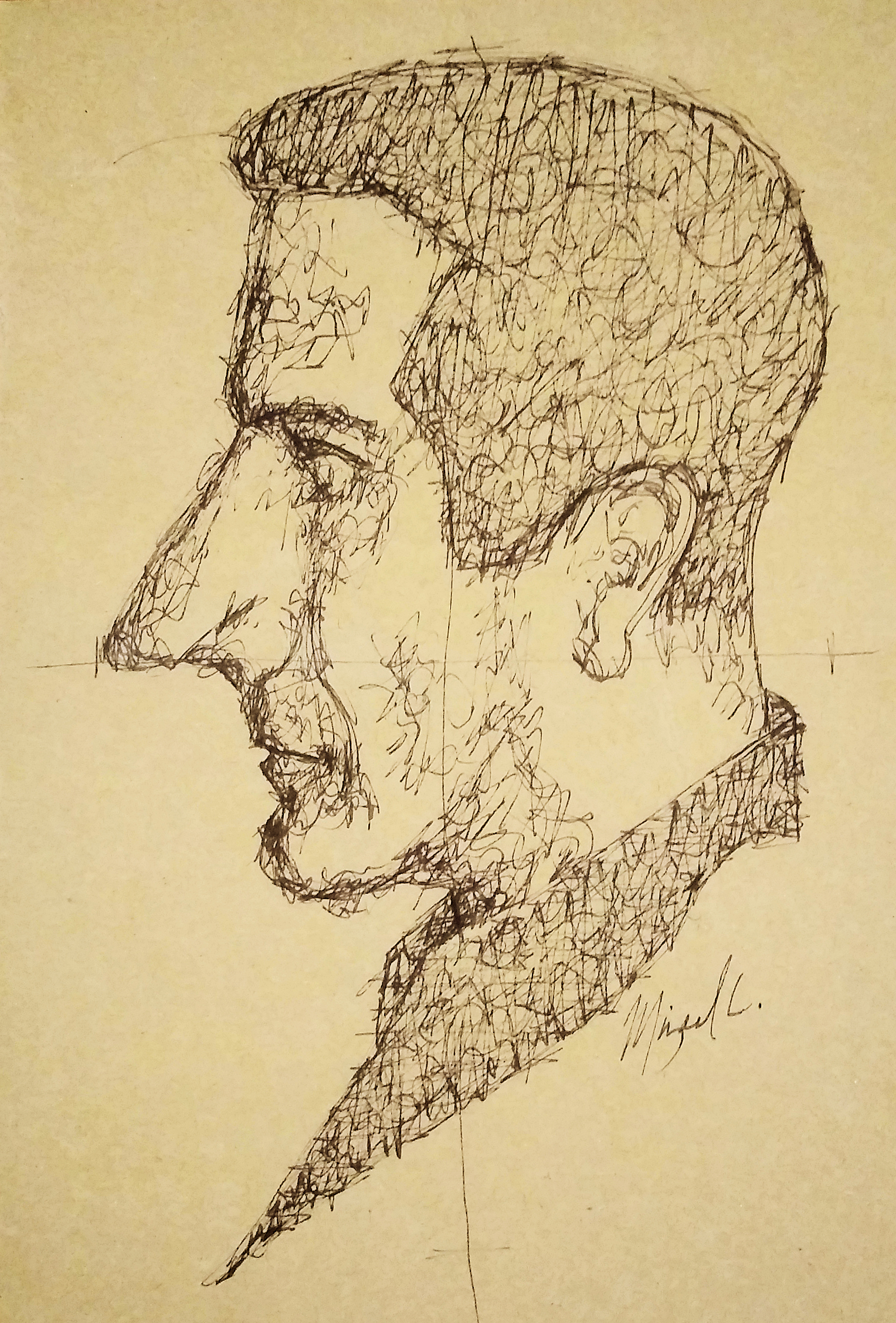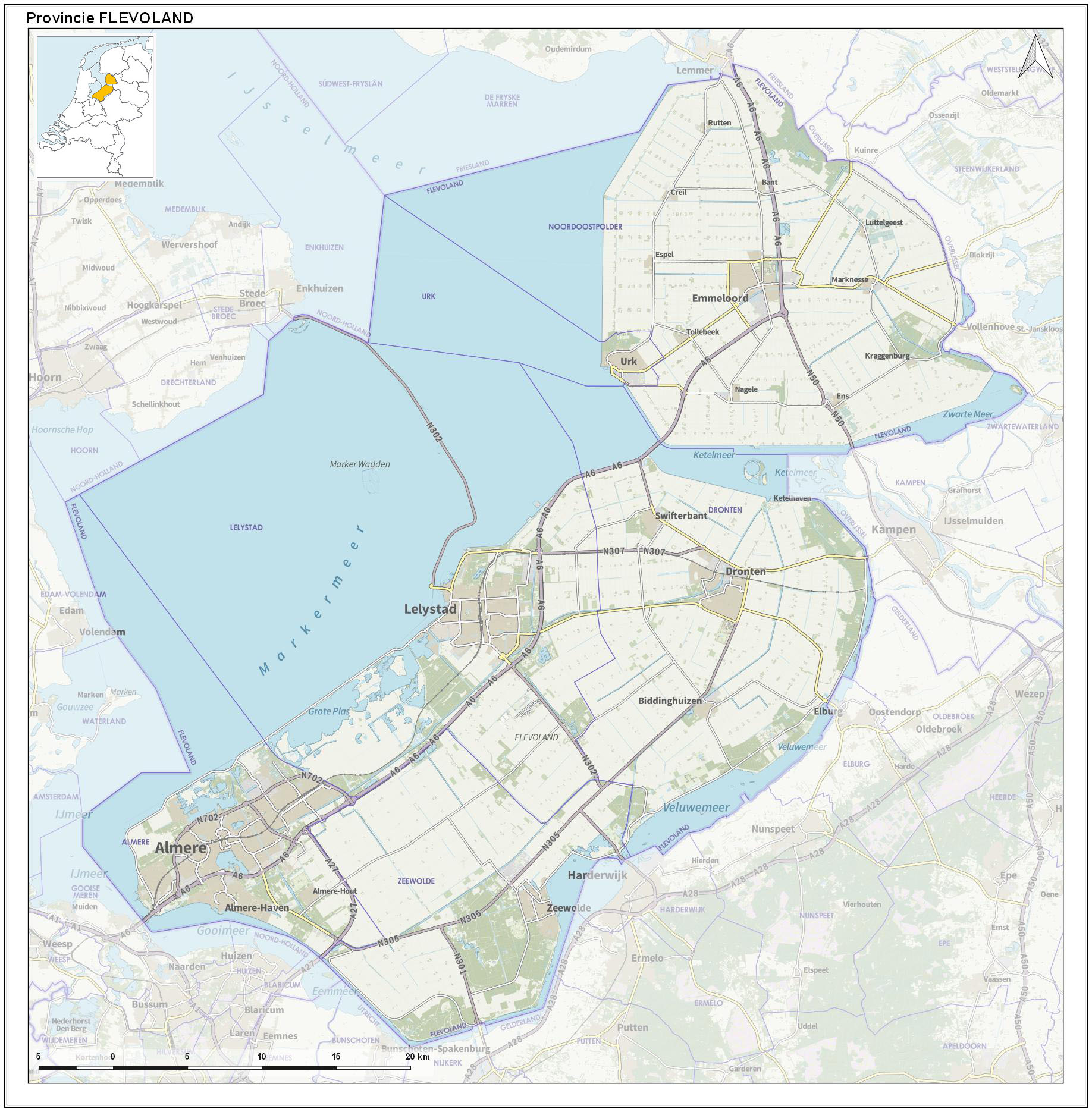|
Nancy Van Overveldt
Nancy van Overveldt, born Nancy Wilhelmina Scheffer (February 2, 1930 - June 7, 2015) was a Dutch-Mexican artist. Van Overveldt worked with MathÃas Goeritz, Pedro Friedeberg and Angela GurrÃa, among other ''modernistas solitarios'' from the Generación de la Ruptura. Life Youth and education Nancy Wilhelmina Scheffer was born in The Hague on February 2, 1930, as daughter of Henri Eduard Scheffer, lawyer, and Jacoba Maria van Overveldt. In 1947 she obtained a prize in a national drawing contest and in 1948 she was accepted in the Royal Academy of Art in the Hague. En 1950 she moved to Paris to study in the academy of André Lhote. Mexico Private life In the train between The Hague and Paris, Van Overveldt met her future husband, Reinhardt Ruge, a Mexican of German descent. They moved to Mexico and had a daughter, Tiahoga Ruge. Van Overveldt obtained Mexican citizenship. After separating from Ruge, Van Overveldt married ValentÃn Saldaña with whom she had her second ... [...More Info...] [...Related Items...] OR: [Wikipedia] [Google] [Baidu] |
The Hague
The Hague ( ; nl, Den Haag or ) is a city and municipality of the Netherlands, situated on the west coast facing the North Sea. The Hague is the country's administrative centre and its seat of government, and while the official capital of the Netherlands is Amsterdam, The Hague has been described as the country's de facto capital. The Hague is also the capital of the province of South Holland, and the city hosts both the International Court of Justice and the International Criminal Court. With a population of over half a million, it is the third-largest city in the Netherlands, after Amsterdam and Rotterdam. The Hague is the core municipality of the Greater The Hague urban area, which comprises the city itself and its suburban municipalities, containing over 800,000 people, making it the third-largest urban area in the Netherlands, again after the urban areas of Amsterdam and Rotterdam. The RotterdamâThe Hague metropolitan area, with a population of approximately 2.6&n ... [...More Info...] [...Related Items...] OR: [Wikipedia] [Google] [Baidu] |
Wassenaar
Wassenaar (; population: in ) is a municipality and town located in the province of South Holland, on the western coast of the Netherlands. An affluent suburb of The Hague, Wassenaar lies north of that city on the N44/A44 highway near the North Sea coast. It is part of the Haaglanden region and the RotterdamâThe Hague metropolitan area. The municipality covers an area of , of which is covered by water. Wassenaar is home to some of the Netherlands' richest residential neighborhoods as well as the country's most expensive street, the ''Groot Haesebroekseweg''. History There are rumours that the 12th-century Romanesque church in Wassenaar lies on the spot where the Northumbrian missionary Willibrord once landed in the Netherlands; the high dunes to the west were not formed until later. Wassenaar long remained an unremarkable little town, known only as the home of the House of Wassenaer. It only began to gain notoriety in the 19th century when Louis Bonaparte ordered the co ... [...More Info...] [...Related Items...] OR: [Wikipedia] [Google] [Baidu] |
Cuernavaca
Cuernavaca (; nci-IPA, CuauhnÄhuac, kÊ·awËnaËwak "near the woods", ) is the capital and largest city of the state of Morelos in Mexico. The city is located around a 90-minute drive south of Mexico City using the Federal Highway 95D. The name ''Cuernavaca'' is a euphonism derived from the Nahuatl toponym and means 'surrounded by or close to trees'. The name was Hispanicized to ''Cuernavaca''; Hernán Cortés called it ''Coadnabaced'' in his letters to Charles V, Holy Roman Emperor, and Bernal DÃaz del Castillo used the name ''Cuautlavaca'' in his chronicles. The coat-of-arms of the municipality is based on the pre-Columbian pictograph emblem of the city which depicts a tree trunk () with three branches, with foliage, and four roots colored red. There is a cut in the trunk in the form of a mouth, from which emerges a speech scroll, probably representing the language Nahuatl and by extension the locative suffix , meaning 'near'. Cuernavaca has long been a favorite escape fo ... [...More Info...] [...Related Items...] OR: [Wikipedia] [Google] [Baidu] |
Juan Soriano (artist)
Juan Soriano (born Juan Francisco RodrÃguez Montoya; August 18, 1920 â February 10, 2006) was a Mexican artist known for his paintings, sculptures and theater work. He was a child prodigy whose career began early as did his fame with various writers authoring works about him. He exhibited in the United States and Europe as well as major venues in Mexico such as the Museo de Arte Moderno and the Palacio de Bellas Artes. His monumental sculptures can be found in various parts of Mexico and in Europe as well. Recognitions of his work include Mexico's National Art Prize, the Chevalier des Arts et Lettres and membership in France's Legion of Honour. Life Soriano was born Juan Francisco RodrÃguez Montoya in Guadalajara to Rafael RodrÃguez Soriano and Amalia Montoya Navarro. Starting in childhood he began to call himself Juan Soriano, preferring the maternal surname of his father. He described his family of origin as âeccentric.â He was a child prodigy, and in 1933, his si ... [...More Info...] [...Related Items...] OR: [Wikipedia] [Google] [Baidu] |
Museo Morelense De Arte Contemporáneo Juan Soriano
Cuernavaca (; nci-IPA, CuauhnÄhuac, kÊ·awËnaËwak "near the woods", ) is the capital and largest city of the Mexican state, state of Morelos in Mexico. The city is located around a 90-minute drive south of Mexico City using the Mexican Federal Highway 95D, Federal Highway 95D. The name ''Cuernavaca'' is a phonaesthetics, euphonism derived from the Nahuatl toponym and means 'surrounded by or close to trees'. The name was Hispanicized to ''Cuernavaca''; Hernán Cortés called it ''Coadnabaced'' in his letters to Charles V, Holy Roman Emperor, and Bernal DÃaz del Castillo used the name ''Cuautlavaca'' in his chronicles. The coat-of-arms of the municipality is based on the pre-Columbian pictograph emblem of the city which depicts a tree trunk () with three branches, with foliage, and four roots colored red. There is a cut in the trunk in the form of a mouth, from which emerges a speech scroll, probably representing the language Nahuatl and by extension the locative suffix , mean ... [...More Info...] [...Related Items...] OR: [Wikipedia] [Google] [Baidu] |
Pulchri Studio
Pulchri Studio (Latin:"For the study of beauty") is a Dutch art society, art institution and art studio based in The Hague ('s-Gravenhage), Netherlands. This institute began in 1847 at the home of painter Lambertus Hardenberg. Since 1893 the club has its residence in the villa at Lange Voorhout in The Hague. Membership is made up of painters, sculptors, photographers and art lovers, with members selected by a committee. An artist's membership allows themt to exhibit their own works in the galleries of the Company. Guests have to be invited by members. Origins The unspoilt countryside around even the rich coastal town of The Hague with its rural environment and the unspoiled landscape and nature and the nearby fishing village of Scheveningen attracted many young artists. The artists wanted to be far away from the state-run requirements of art (neo-classicism) and liked to decide their own way. The model was the successful artist colony of Barbizon south of Paris in the forest ... [...More Info...] [...Related Items...] OR: [Wikipedia] [Google] [Baidu] |
Naomi Siegmann
Naomi Siegmann (1933 â 28 February 2018) was an American artist who developed her career in Mexico, and was noted for her depiction of everyday objects outside their normal contexts. She began her career after she moved to Mexico with her family, learning to carve wood. She worked in this medium for about twenty years, before moving on to other materials, including recycled ones, in part due to her concerns for the environment. During her career, she had solo exhibits in Mexico and the United States, with participation in collective exhibits in these countries and Europe. She has been commissioned to create monumental works in Mexico and the United States. Her work has been recognized through membership in the Salón de la Plástica Mexicana. Life Siegmann was born in New York in 1933. In 1960, she moved with her husband and two small children to the small town of Santa Rosa de Múzquiz in Coahuila because of her husband's work in mining. After reading many books, she decided ... [...More Info...] [...Related Items...] OR: [Wikipedia] [Google] [Baidu] |
Goethe-Institut
The Goethe-Institut (, GI, en, Goethe Institute) is a non-profit German cultural association operational worldwide with 159 institutes, promoting the study of the German language abroad and encouraging international cultural exchange and relations. Around 246,000 people take part in these German courses per year. The Goethe-Institut fosters knowledge about Germany by providing information on German culture, society and politics. This includes the exchange of films, music, theatre, and literature. Goethe cultural societies, reading rooms, and examination and language centres have played a role in the cultural and educational policies of Germany for more than 60 years. It is named after German poet and statesman Johann Wolfgang von Goethe. The Goethe-Institut e.V. is autonomous and politically independent. Partners of the institute and its centres are public and private cultural institutions, the German federal states, local authorities and the world of commerce. Much of ... [...More Info...] [...Related Items...] OR: [Wikipedia] [Google] [Baidu] |
Flevoland
Flevoland () is the twelfth and youngest province of the Netherlands, established in 1986, when the southern and eastern Flevopolders, together with the Noordoostpolder, were merged into one provincial entity. It is in the centre of the country in the former Zuiderzee, which was turned into the freshwater IJsselmeer by the closure of the Afsluitdijk in 1932. Almost all of the land belonging to Flevoland was reclaimed in the 1950s and 1960s while splitting the Markermeer and Bordering lakes from the IJsselmeer. As to dry land, it is the smallest province of the Netherlands at , but not gross land as that includes much of the waters of the fresh water lakes (meres) mentioned. The province has a population of 423,021 as of January 2020 and consists of six municipalities. Its capital is Lelystad and its most populous city is Almere, which forms part of the Randstad and has grown to become the seventh largest city of the country. Flevoland is bordered in the extreme north by Fries ... [...More Info...] [...Related Items...] OR: [Wikipedia] [Google] [Baidu] |
October Gallery
The October Gallery is an art gallery in central London, established in 1979.October Gallery Accessed 22 December 2007. History The October Gallery was established in 1979. From its beginnings, the October Gallery has promoted the art and artists of the ''Transvangarde'' or trans-cultural . The gallery has exhibited the work of artists from more than 65 different countries, and from ...[...More Info...] [...Related Items...] OR: [Wikipedia] [Google] [Baidu] |
Lelystad
Lelystad () is a municipality and a city in the centre of the Netherlands, and it is the capital of the province of Flevoland. The city, built on reclaimed land, was founded in 1967 and was named after Cornelis Lely, who engineered the Afsluitdijk, making the reclamation possible. Lelystad is approximately below sea level. It is located about 20 km north east of Almere and 40 km west of Zwolle. History Lelystad is built on the seabed of the former Zuiderzee. About 6500 years ago this wetland was above high tide level and inhabited; the Netherlands have steadily subsided since. Near Lelystad at Swifterbant, the oldest human skeletons in Western Europe were discovered. Due to rising water levels and storms, the peatlands were washed away, and the Lacus Flevo (in Roman times) grew to be the Almere (Middle Ages) and became the Zuiderzee. The Zuiderzee (Southern Sea) was the main transport route from Amsterdam to the North Sea and the Hanseatic League cities. Due to the many shipw ... [...More Info...] [...Related Items...] OR: [Wikipedia] [Google] [Baidu] |






